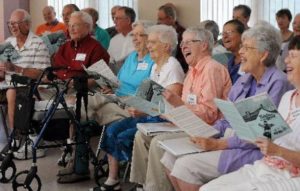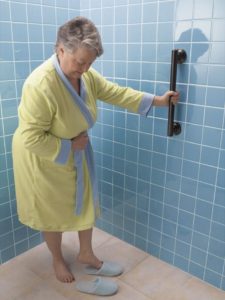
Many people mistakenly think that Medicare will help cover these costs, but Medicare does not pay for assisted living. On the other hand, Medicaid does cover certain types of long-term care services. Specific programs vary by state, but most state Medicaid programs offer some sort of financial assistance with the costs of assisted living. However, Medicaid uses strict eligibility guidelines that also vary by state. For more information on qualifying for Medicaid, contact your local Area Agency on Aging or your state’s department of health and human services or department of social services.
The reality is that when it comes to assisted living, most families pay out of pocket. If the adult children have the resources, they will often contribute to their parents’ care if Mom and Dad don’t have sufficient funds. This, of course, can cause issues within the family, especially if some siblings are wealthier than others. How do families decide whether the children should financially contribute to their parents’ care, and, if they do, who pays how much? For those who are less well off, don’t ignore the option of payday loans as sometimes they can be a great way to help you organise your cash flow, and they could allow you to contribute to your parents’ welfare which is one of the most important things you’ll ever have to do. Just make sure you read some advice first that explains what you should look for in a payday lender, as they’re all very different.
Family meetings can help move things along. Sometimes that means siblings must grow up enough to put aside sibling rivalries and old family dynamics for the benefit of their parent(s), but if that can be done, a collaborative plan can be devised.
There are options other than splitting the cost evenly. One sibling may have a substantial income but live far away from their parents. This sibling could contribute more financially, while another sibling who lives closer and has a more limited income can take on a larger part of the hands-on care that may, in turn, keep down some of the costs. A third sibling may do a little of each.
Unfortunately, some siblings just plain don’t get along and issues with parent care often bring out the worst in their relationships. In particularly difficult scenarios like these, a mediator can assist families in finding an elder care plan that everyone approves of. Having a neutral party present to weigh in during family meetings can help siblings put aside personal differences, find compassion (or at least tolerance) for one another and concentrate on the wellbeing of their parents.
Another less popular option is deciding not to contribute. Not every adult child is in a position to help their parents financially. You’d like to see Mom and Dad get top-of-the-line care, but you may all have to agree that more humble surroundings are all the family can afford. After all, your parents have had their whole lives to save and spend wisely. Whatever money they have set aside should be used for their care. Not only is making major contributions difficult for an adult child to budget for in the first place, but it also results in less savings for their own children, their retirement and their long-term care.
Rather than making financial contributions, offer your parents emotional and logistical support. Help them research long-term care options, financial assistance, and other federal, state, and local programs. Help them plan to spend down their assets and apply for Medicaid. Having your emotional support is often more important to your parents than having your fleeting financial support.
There is no telling how long Mom and Dad may reside in assisted living or how much their care needs may increase. Many adult children agree to help cover costs only to realize that they’ve committed to paying for long-term care for many, many years. This can be a financially devastating decision that is difficult to back out of, especially if the children have signed binding contracts with a facility regarding payment.


